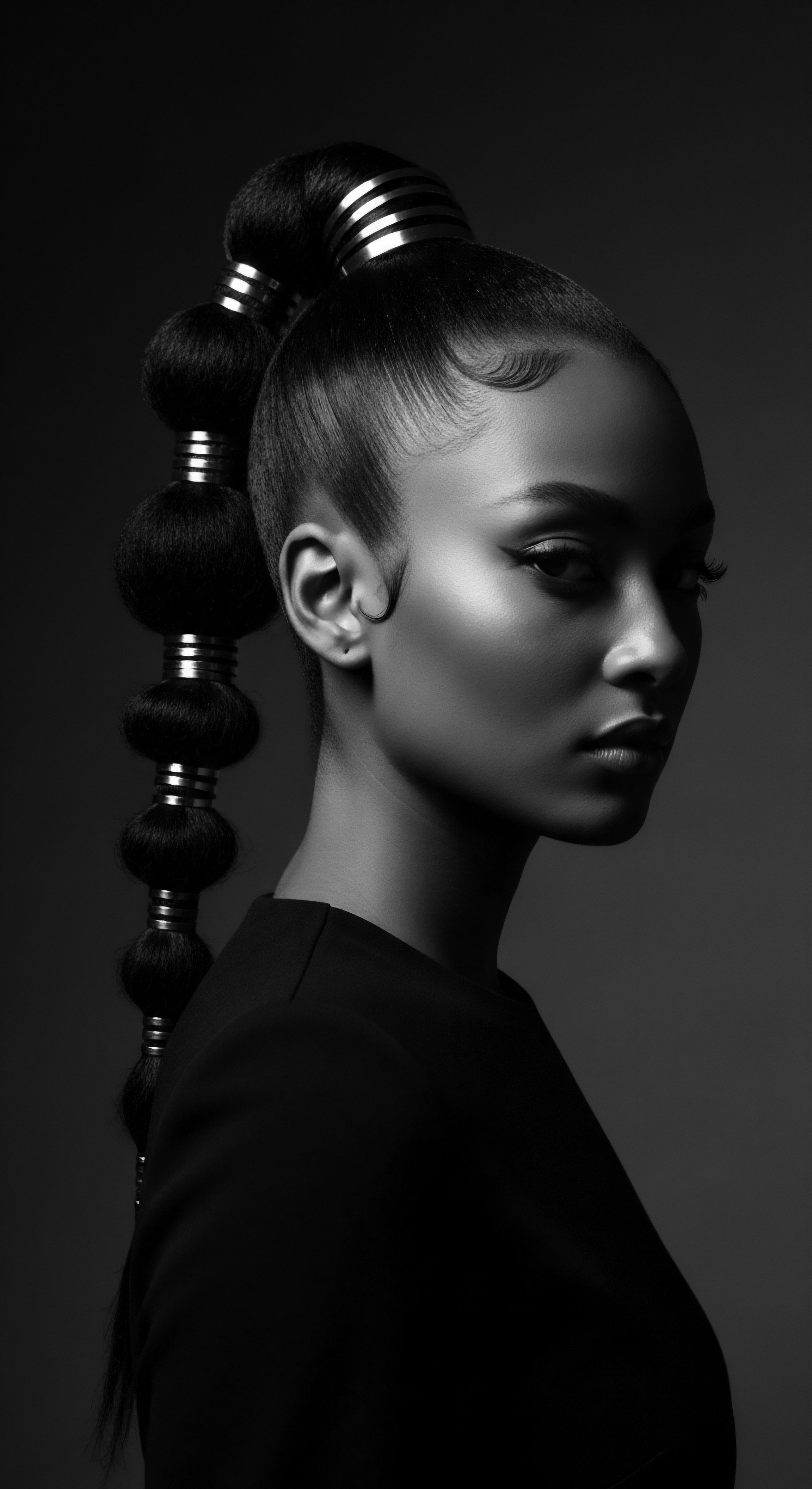
Fundamentals
The very essence of Afro Hair Lipids speaks to the foundational biological components that grant Afro-textured hair its unique structural integrity and distinctive characteristics. At its most straightforward interpretation, Afro Hair Lipids are the fatty substances, both naturally occurring within the hair fiber and those applied externally, that are crucial for the health, appearance, and resilience of tightly coiled and curly hair. These lipids, a blend of various molecules like fatty acids, ceramides, and cholesterol, form a protective barrier.
They help to maintain the hair’s moisture balance, contributing to its suppleness and strength. Understanding this fundamental aspect provides a gateway to appreciating the nuanced care textured hair demands, a care deeply rooted in ancestral wisdom and practices.
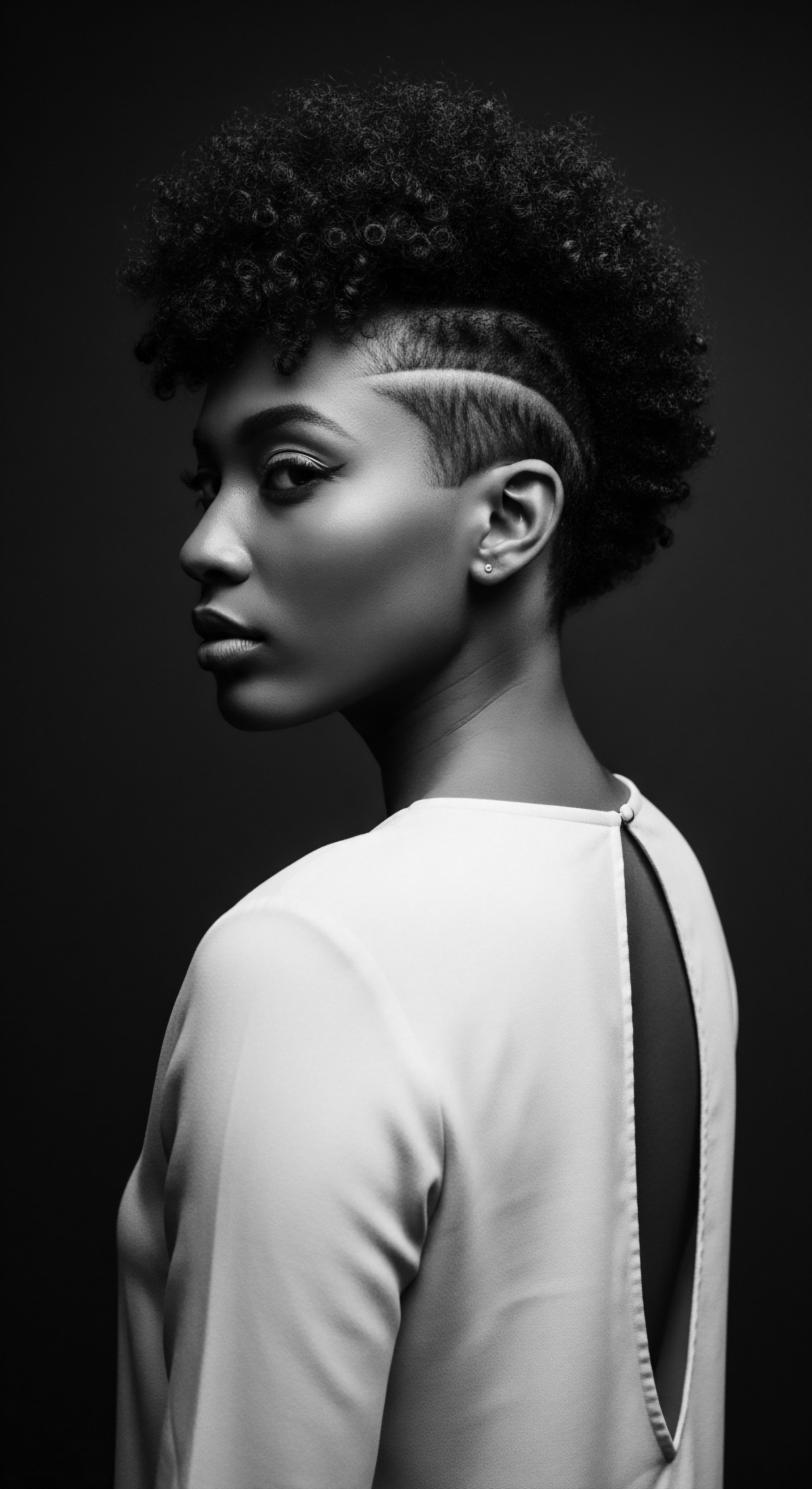
The Hair’s Protective Veil
Hair lipids, at their core, serve as a protective veil. They are not merely superficial coatings but are woven into the very architecture of the hair strand, particularly within the cuticle layer and deeper within the cortex. This internal and external lipid presence is paramount for shielding the hair from environmental aggressors, reducing friction between individual strands, and preventing excessive water loss.
Without a sufficient lipid profile, hair can become brittle, prone to breakage, and exhibit a parched appearance. This basic understanding sets the stage for recognizing why traditional hair care methods, often involving rich, natural oils and butters, have always centered on replenishing these vital components.
Afro Hair Lipids are the foundational fatty substances, both inherent and applied, that underpin the unique structure and resilience of textured hair, forming a protective barrier essential for its health and moisture.
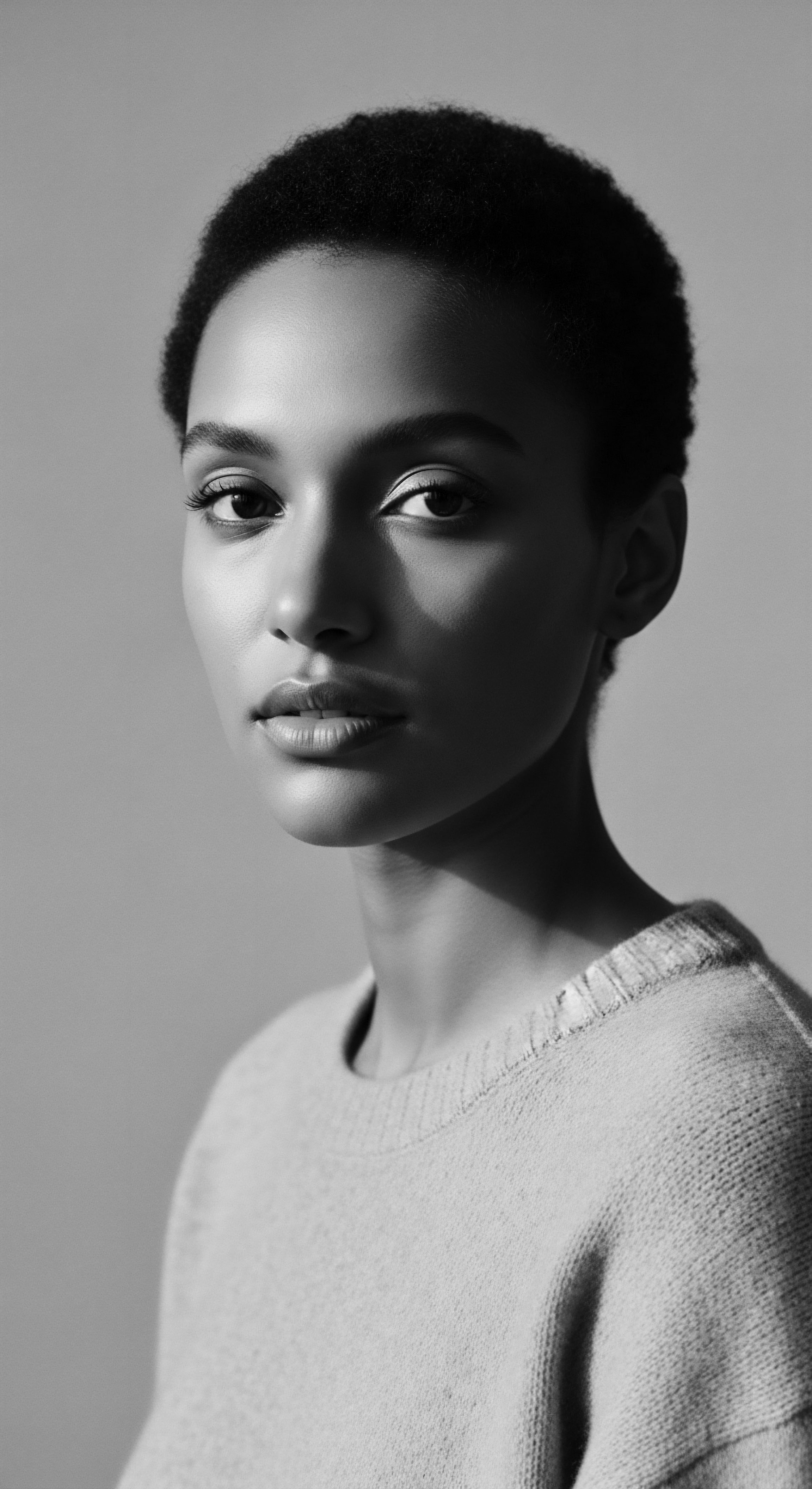
Elemental Components of Hair Lipids
The lipid landscape of hair is diverse, encompassing several key types, each playing a distinct role in hair health.
- Fatty Acids ❉ These organic compounds are fundamental building blocks of many lipids and are found abundantly in both endogenous (naturally produced by the body) and exogenous (applied from external sources) hair lipids. They contribute significantly to the hair’s softness and flexibility.
- Ceramides ❉ Recognized as a vital component of the hair cuticle’s lipid layer, ceramides act as a kind of intercellular “mortar,” binding the cuticle cells together. Their presence is crucial for maintaining the hair’s barrier function and preventing damage.
- Cholesterol ❉ This waxy, fatty substance is another significant lipid in hair, contributing to the structural integrity of keratinocyte membranes within the hair. External applications of cholesterol can help repair and add a protective layer to damaged hair, aiding in smoothing the cuticle.
These elements, in varying proportions, constitute the complex lipid profile that defines the characteristics of Afro-textured hair, distinguishing it from other hair types.
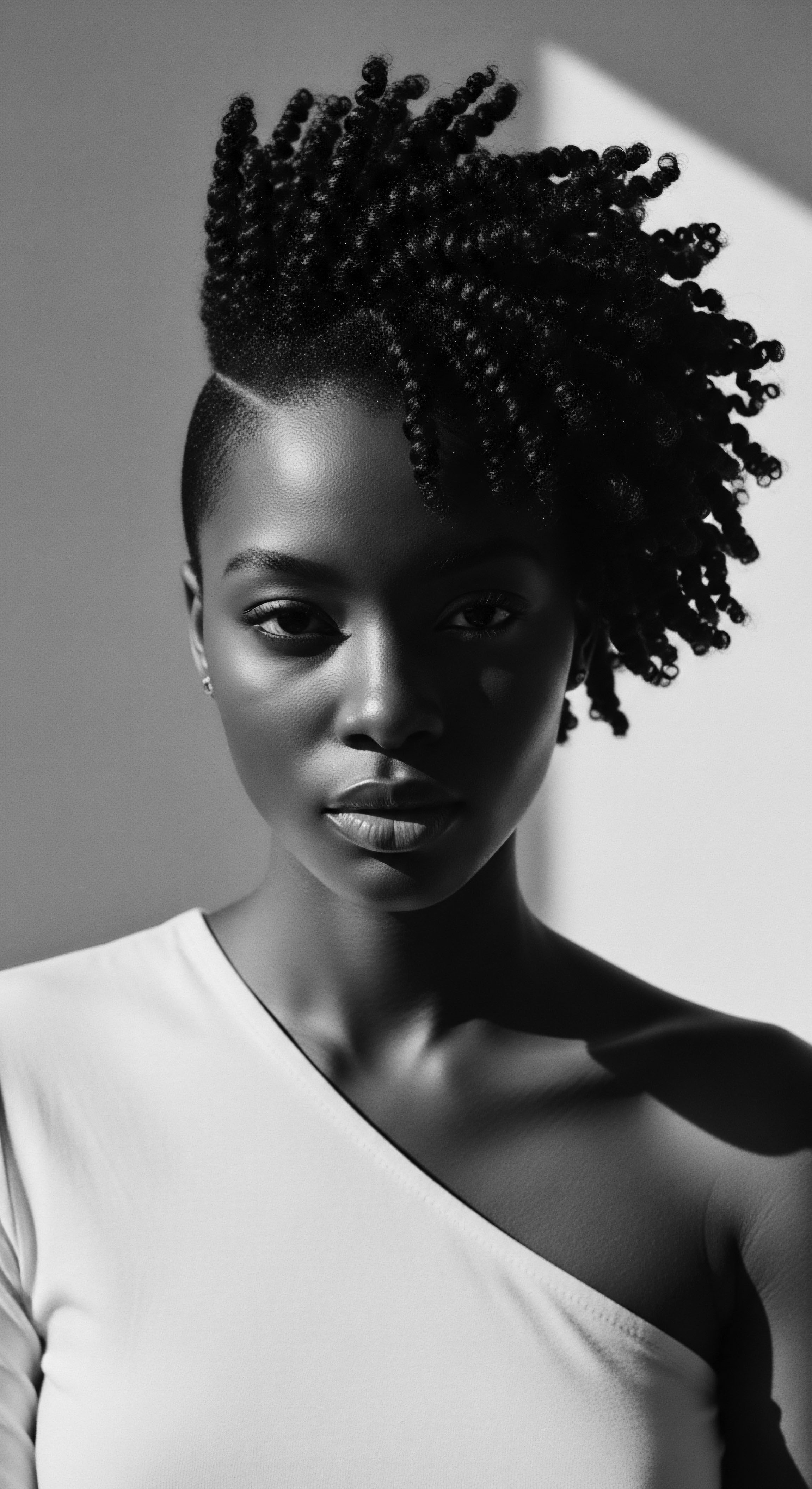
Initial Glimpses of Heritage in Care
From the earliest recorded histories, communities with textured hair understood, perhaps intuitively, the significance of these fatty elements. Long before scientific laboratories isolated and identified specific lipid molecules, ancestral practices utilized naturally occurring oils and butters to condition, protect, and adorn hair. These practices were not simply about aesthetics; they were deeply intertwined with health, social status, and spiritual connection.
The application of rich, unrefined butters, often derived from indigenous plants, served as an early form of lipid replenishment, safeguarding the hair from harsh climates and the rigors of daily life. This rudimentary understanding forms the bedrock of modern Afro hair care, linking contemporary science with the enduring wisdom of generations past.
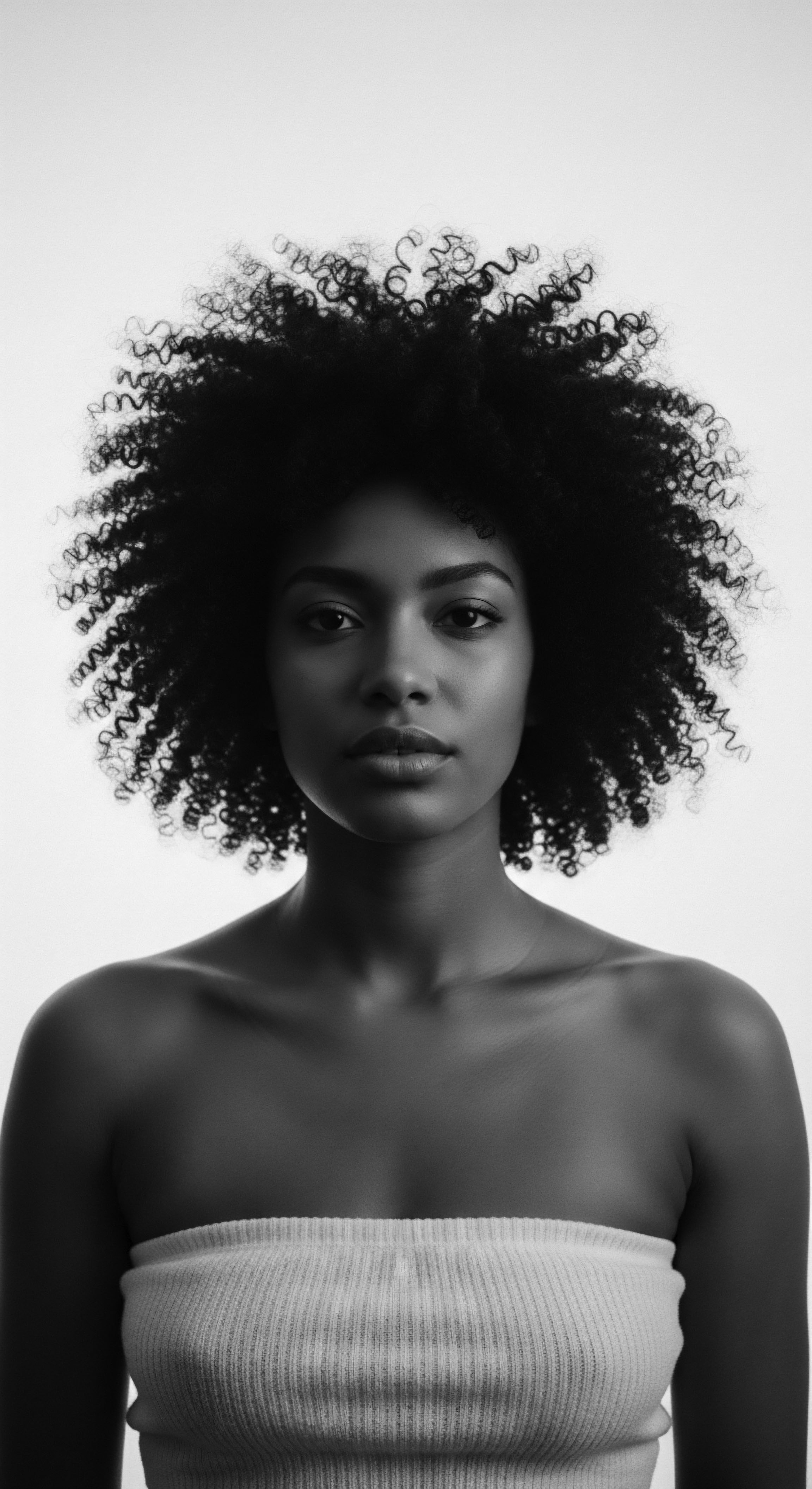
Intermediate
Moving beyond the foundational definition, an intermediate understanding of Afro Hair Lipids delves into their distinctive quantitative and qualitative presence in textured hair, examining how this unique composition influences its care requirements and historical grooming practices. Afro-textured hair possesses a lipid content that sets it apart from other hair types, a characteristic that shapes its interaction with moisture and its susceptibility to certain forms of damage. This difference is not a deficit, but rather a unique biological blueprint that necessitates specific, culturally informed approaches to care.
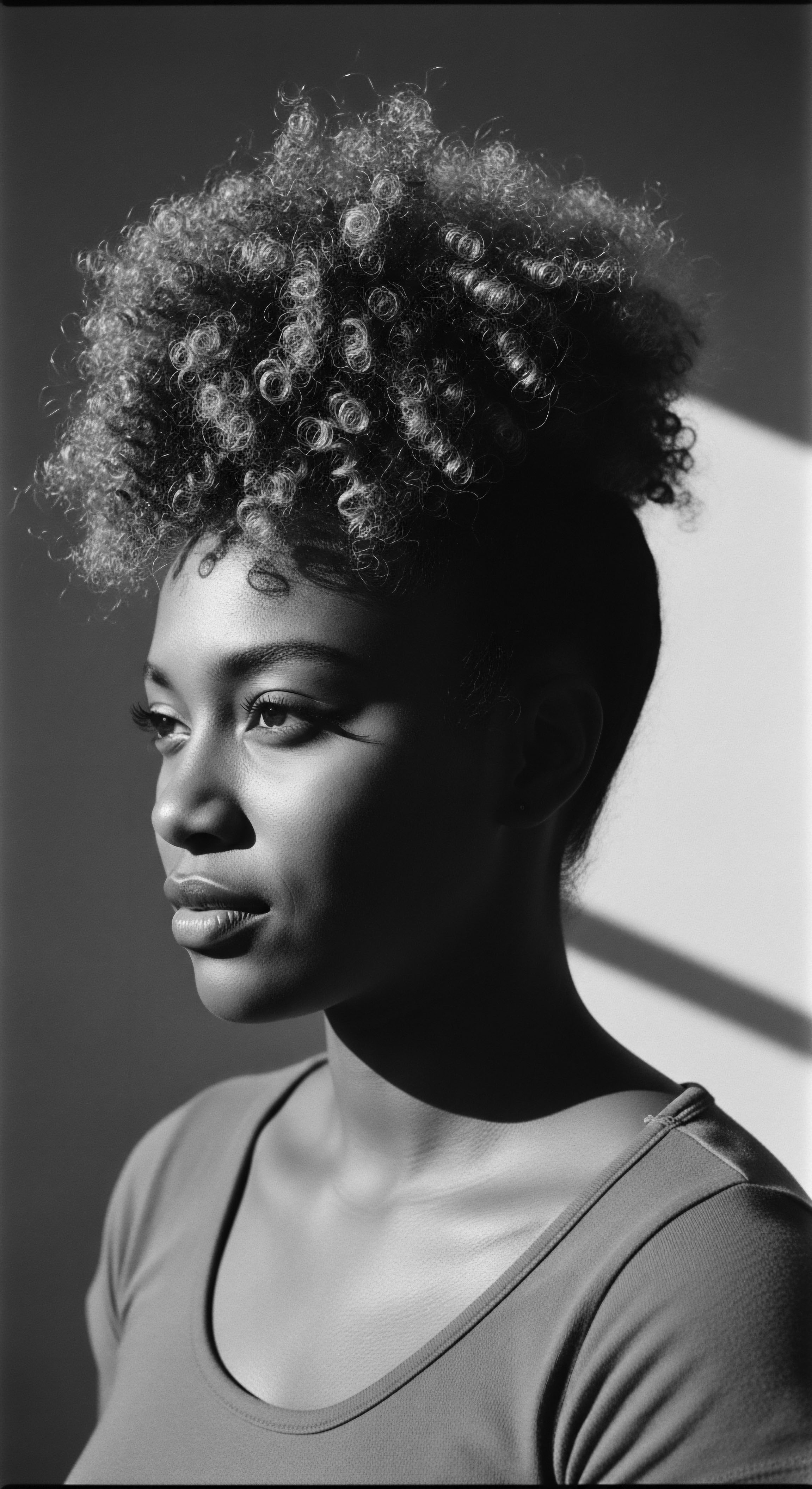
The Quantitative Uniqueness of Afro Hair Lipids
Scientific investigations have revealed that Afro-textured hair exhibits the highest overall lipid content compared to European and Asian hair types. Research indicates that Afro-textured hair can have quantities estimated to be 2.5 to 3.2 times higher than European and Asian hair, respectively. This includes a higher internal lipid content, approximately 1.7 times greater than other ethnic groups, with elevated levels of free fatty acids, sterols, and polar lipids. This abundance might seem counterintuitive given the common perception of Afro-textured hair as dry.
However, this paradox is resolved by considering the hair’s unique structural morphology. The tight curls and coils, while beautiful, create points of weakness and make it more challenging for natural oils produced by the scalp to travel down the entire length of the hair strand. This structural reality means that despite a higher inherent lipid content, the hair often experiences dryness due to uneven distribution and increased vulnerability to moisture loss.
Afro-textured hair, despite its high internal lipid content, often presents as dry due to its structural curvature, which impedes natural oil distribution and increases moisture loss.
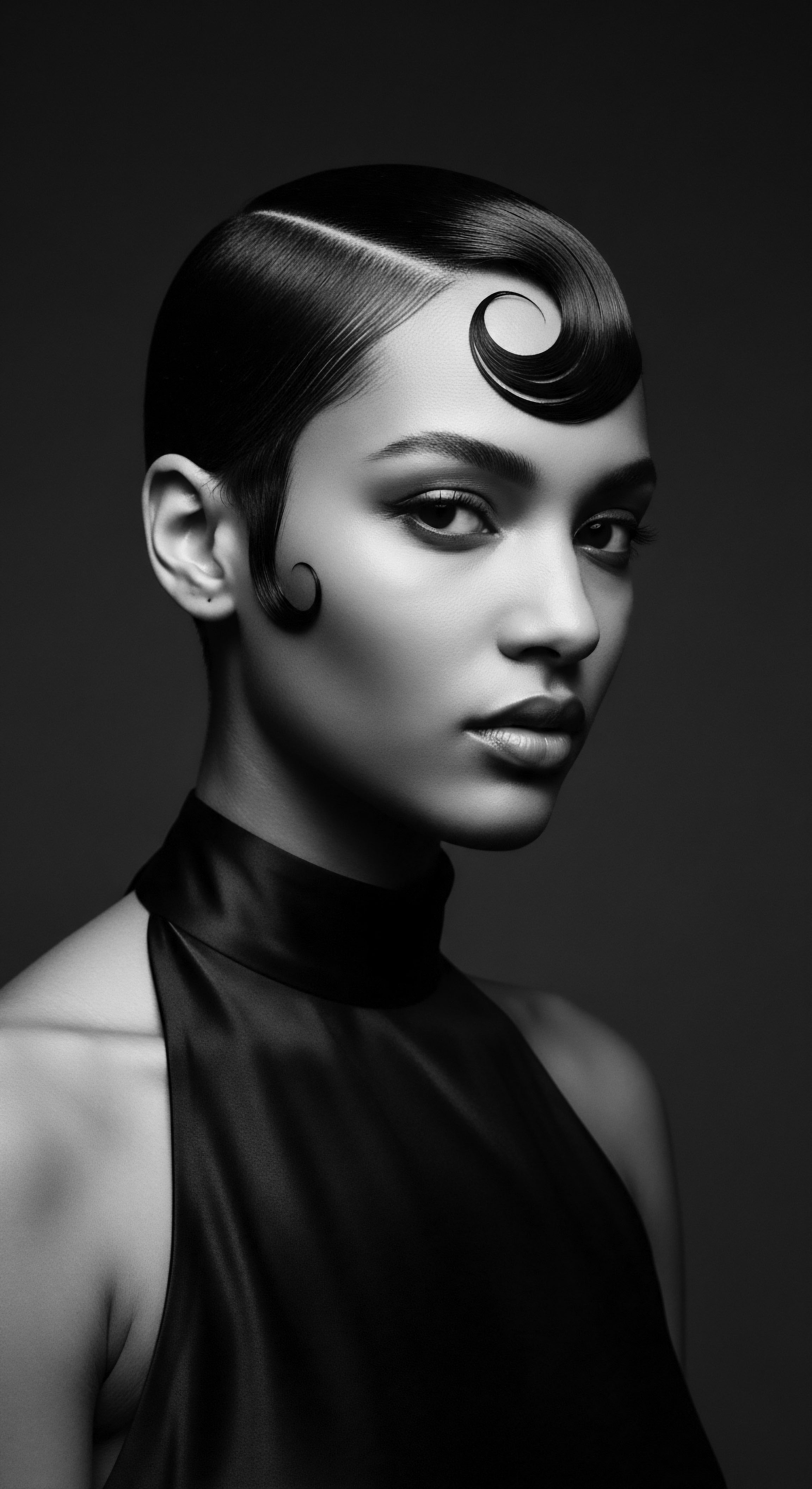
Ancestral Wisdom in Lipid Application
Generations of Black and mixed-race communities intuitively recognized the need to supplement the hair’s natural lipid barrier. This deep understanding is evident in the historical and ongoing use of rich, natural ingredients.
Consider the profound role of Shea Butter (Vitellaria paradoxa), often called “women’s gold” in West Africa. For centuries, women have harvested and processed shea nuts to extract this unctuous substance, applying it to skin and hair for moisture and protection against harsh environmental conditions. This practice, passed down from mother to daughter, represents a tangible application of ancestral knowledge to support hair’s lipid needs. The use of shea butter is not merely cosmetic; it is a legacy of care, resilience, and economic empowerment for millions of women.
Another powerful example is Palm Oil, particularly the red palm oil, which has been a staple in traditional African cuisines and beauty treatments for centuries. Its rich content of vitamins A and E, alongside antioxidants, makes it a potent ingredient for hair, penetrating the shaft to provide essential moisture and strength, helping to prevent breakage and reduce scalp issues. The wild palm kernel oil from the Ivory Coast, for instance, has been traditionally used by women farmers for cosmetic purposes, including as a hair restorer.
| Traditional Lipid Source Shea Butter (Karité) |
| Region of Prominence West Africa (e.g. Ghana, Nigeria, Burkina Faso) |
| Historical Hair Application (Heritage Link) Moisturizing, protecting from sun and wind, pomade for holding styles, stimulating hair growth. Passed down through generations. |
| Traditional Lipid Source Palm Oil (Red Palm Oil, Palm Kernel Oil) |
| Region of Prominence West and Central Africa (e.g. Nigeria, Ivory Coast) |
| Historical Hair Application (Heritage Link) Restoring hair, adding shine, aiding hair growth, reducing dandruff, treating scalp issues. Used in newborn care. |
| Traditional Lipid Source Avocado Oil |
| Region of Prominence Various African regions |
| Historical Hair Application (Heritage Link) Intensive hair treatments, rich in vitamins and fatty acids for nutritive addition. |
| Traditional Lipid Source Manketti Oil (Mongongo Oil) |
| Region of Prominence Across African continent |
| Historical Hair Application (Heritage Link) Used in traditional Kwangali hair oil treatments, highly emollient for moisturizing. |
| Traditional Lipid Source These ancestral ingredients demonstrate a deep, inherited understanding of hair's lipid needs, long before scientific validation. |
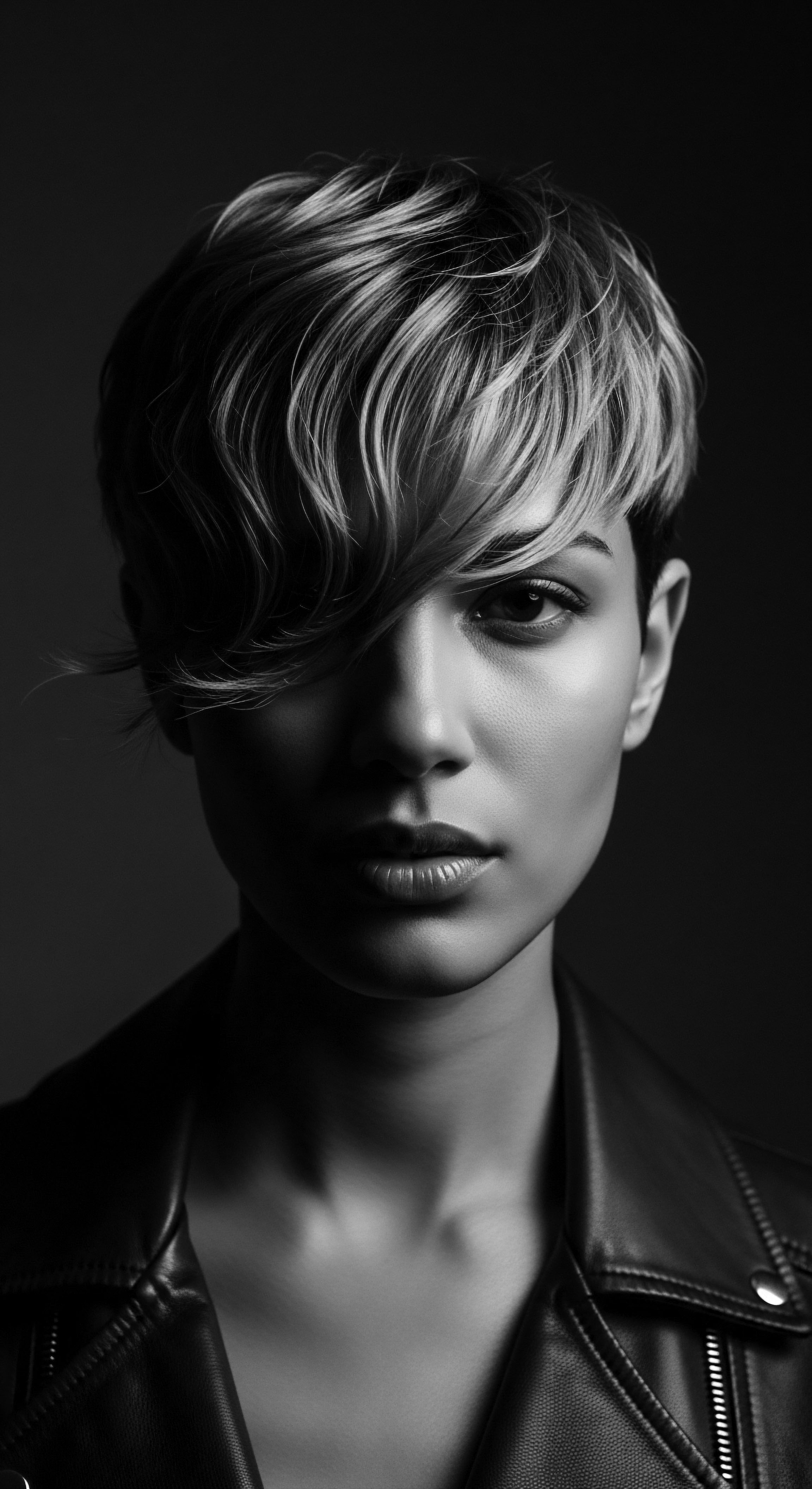
The Role of Lipids in Hair Fragility
The unique structure of Afro-textured hair, characterized by its tight curls and twists, renders it more susceptible to breakage. This increased fragility is influenced by several factors, including the mechanical stresses induced by its coiled shape and the uneven distribution of internal lipids. While Afro-textured hair has a higher overall lipid content, these lipids might not be evenly distributed, leading to areas of weakness. The constant bending and unbending of tightly coiled strands can create internal shear forces, contributing to crack formation and breakage.
Thus, the historical emphasis on protective styles and moisturizing agents was not merely a cultural preference but a practical response to the inherent biomechanical properties of textured hair. This intermediate understanding bridges the gap between traditional practices and scientific observations, revealing the profound wisdom embedded in ancestral hair care.
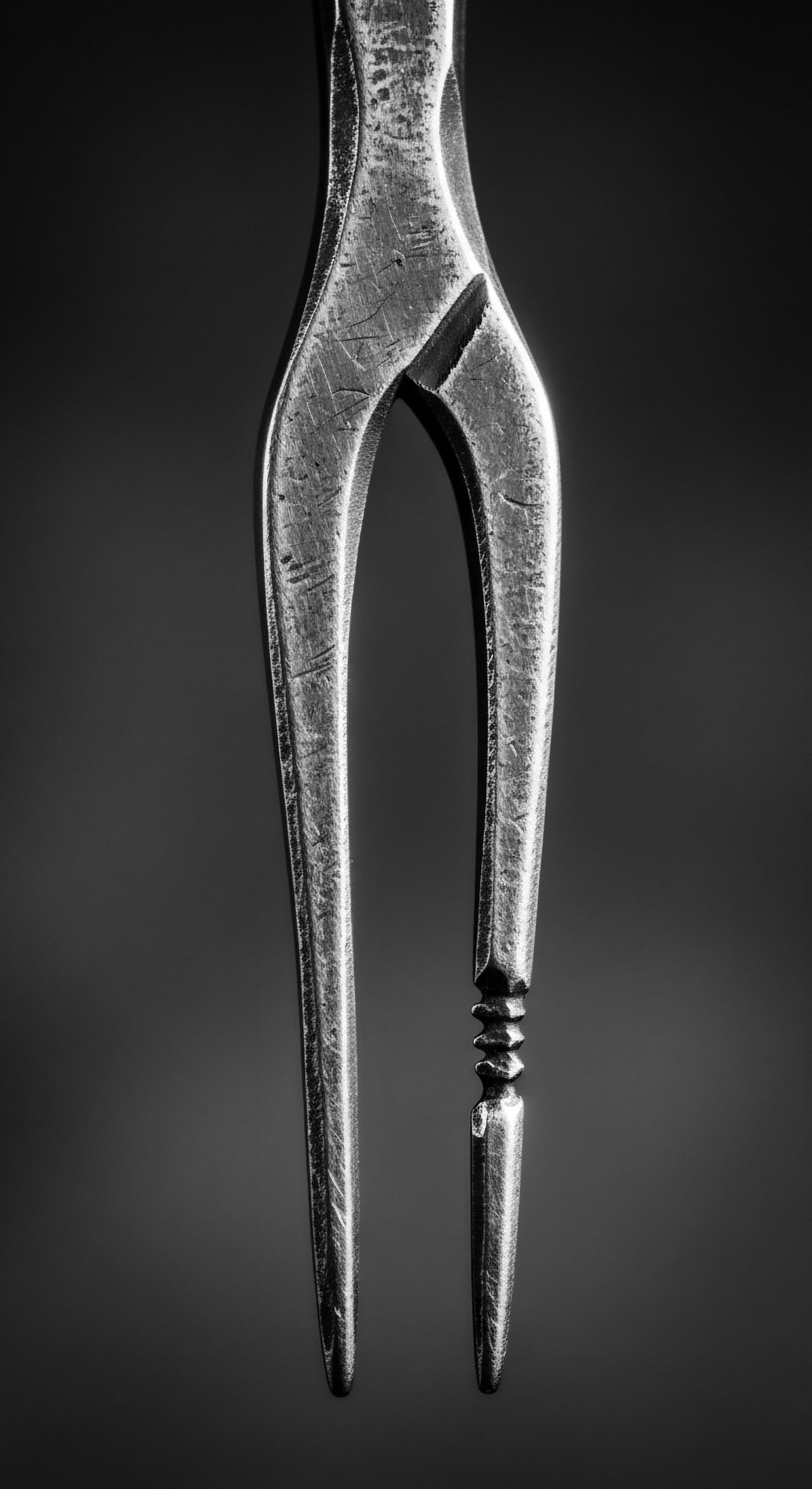
Academic
The academic investigation into Afro Hair Lipids transcends basic definitions, demanding a rigorous examination of their complex molecular architecture, their physiological function within the hair fiber, and their profound implications for the nuanced care of textured hair, all viewed through the lens of cultural heritage and diasporic experiences. This meaning is a compound understanding, woven from biochemical analysis, dermatological insight, and anthropological inquiry, revealing how elemental biology informs and is informed by centuries of ancestral wisdom.

The Molecular Delineation of Afro Hair Lipids
Afro Hair Lipids represent a diverse class of organic compounds, primarily composed of free fatty acids (FFAs), cholesterol, cholesterol esters, ceramides, glycosylceramides, and 18-methyleicosanoic acid (18-MEA). These lipids exist in both exogenous forms, originating from sebaceous glands, and endogenous forms, biosynthesized within the hair matrix cells. Critically, Afro-textured hair distinguishes itself by possessing a higher total internal lipid content compared to Caucasian and Asian hair, with some studies indicating it is approximately 1.7 times greater in internal lipids. This elevated internal lipid presence, particularly in FFAs, sterols, and polar lipids, influences the arrangement of keratin fibers, contributing to the distinct morphology of Afro-textured hair.
The role of Ceramides is particularly significant in the context of Afro Hair Lipids. Ceramides are the most important intracellular lipids forming the lipid layer of the hair cuticle, acting as a crucial barrier to protect and strengthen the internal components of the hair shaft. A deficiency or disruption in this ceramide-rich layer can compromise the hair’s protective function, leading to increased porosity and vulnerability to damage.
While Afro-textured hair may have a higher overall lipid content, the distribution and specific ratios of these lipids, especially ceramides, might play a role in its perceived dryness and propensity for breakage. This suggests that the quality and integrity of the lipid barrier, rather than just the quantity of lipids, are paramount for textured hair health.
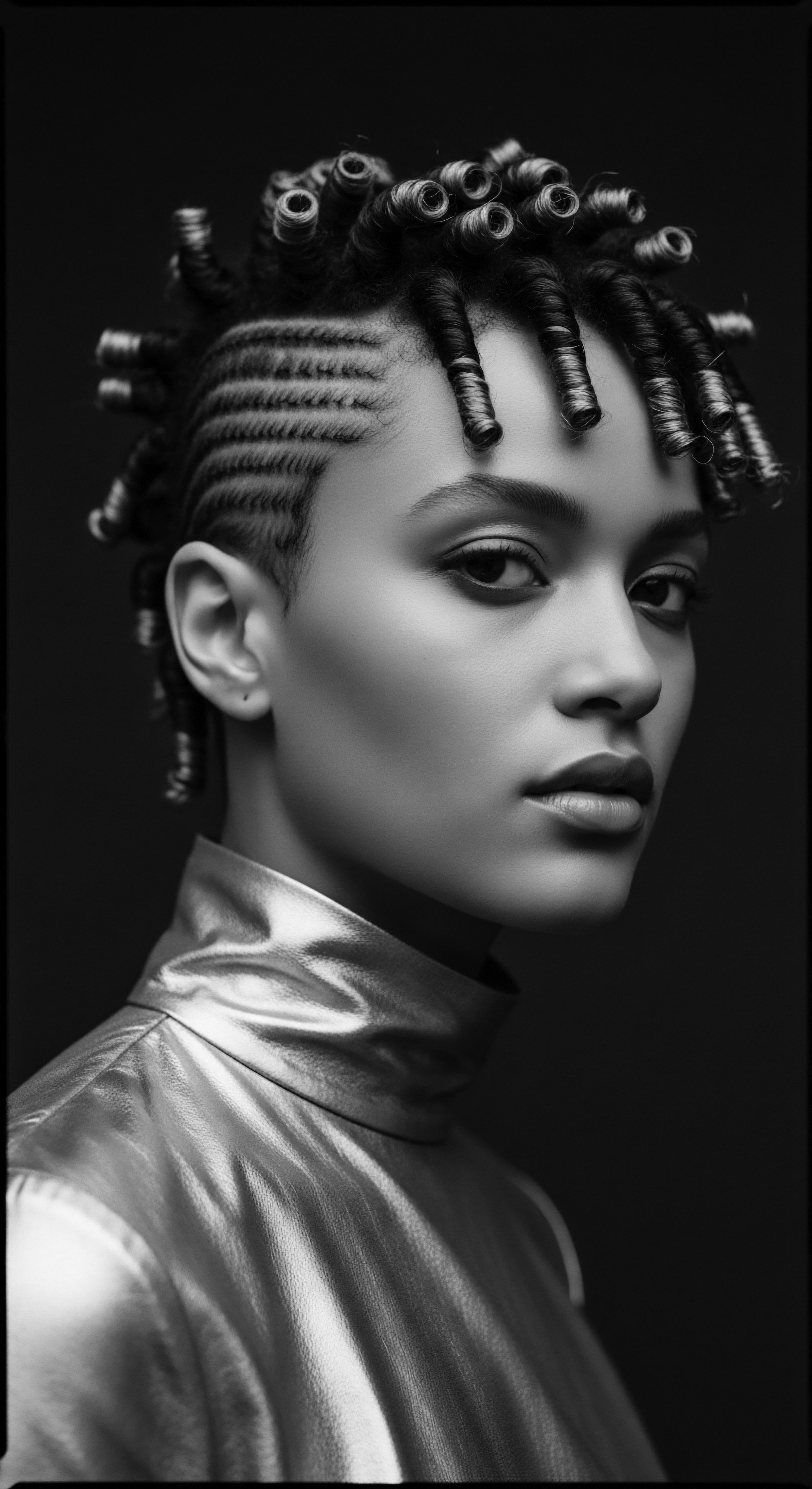
The Paradox of Abundance and Perceived Dryness
The observation that Afro-textured hair, despite its higher lipid content, is frequently characterized as dry or very dry presents a compelling paradox. This phenomenon is not a contradiction of the biological reality but rather an intricate interplay of structural biomechanics and lipid dynamics. The tightly coiled and elliptical cross-sectional shape of Afro-textured hair creates natural stress points along the hair shaft. These points are more susceptible to mechanical damage from styling and environmental exposure.
Furthermore, the helical curvature of the hair makes it difficult for sebum, the scalp’s natural lipid secretion, to uniformly coat the entire length of the strand. This uneven distribution means that while the scalp may produce ample lipids, the mid-shaft and ends of the hair often remain undersupplied, leading to a sensation of dryness and increased susceptibility to breakage. This structural characteristic underscores why traditional practices of oiling and buttering the hair, often focusing on the lengths and ends, were not merely cosmetic but a necessary intervention to supplement the hair’s natural, yet structurally hindered, lipid distribution.
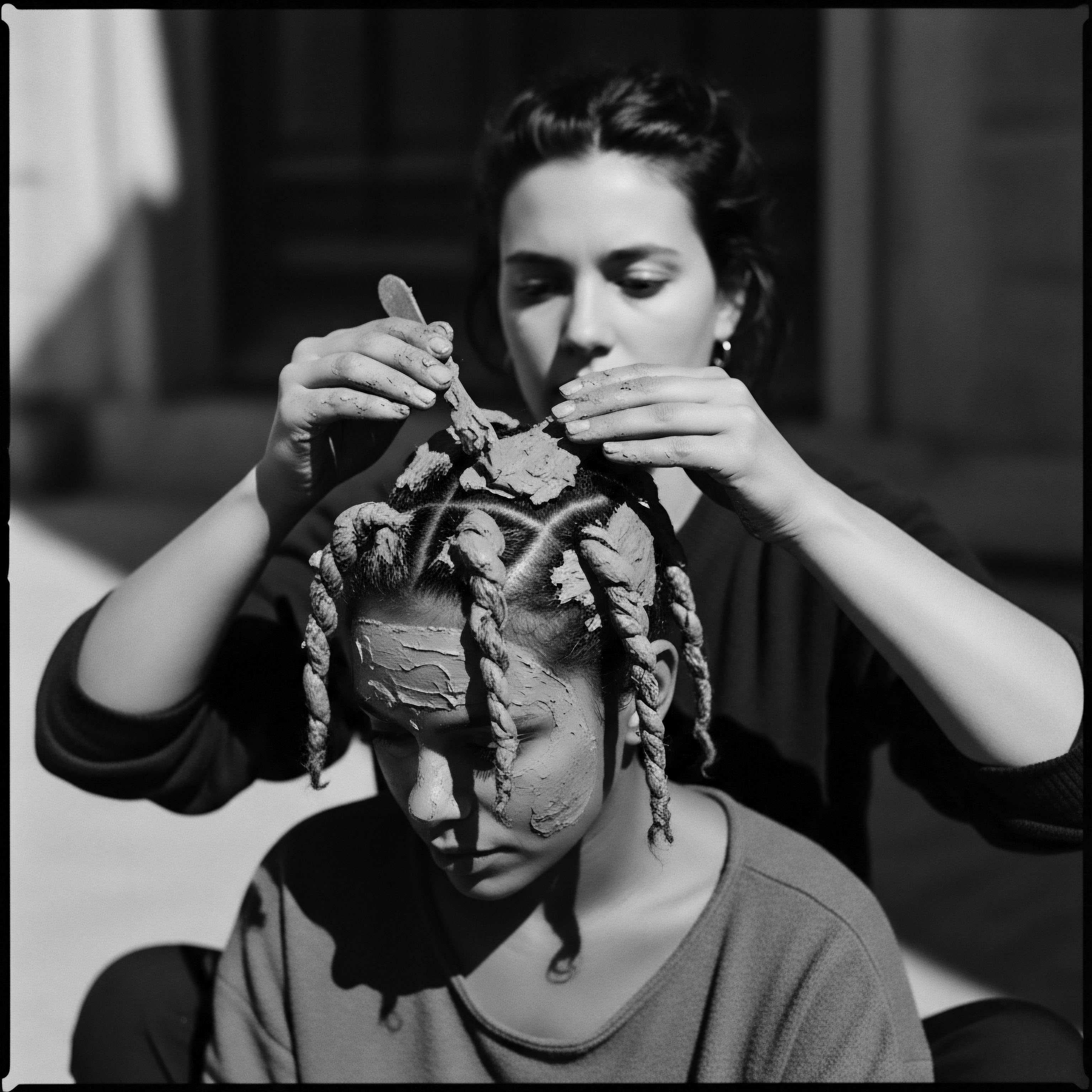
Historical and Cultural Connotation of Lipid Care in Textured Hair Heritage
The care of Afro-textured hair, particularly through the application of lipid-rich substances, holds profound historical and cultural significance, extending far beyond mere hygiene or aesthetics. In ancient African societies, hair was a powerful medium of communication, signifying social status, age, marital status, tribal affiliation, and even spiritual beliefs. The meticulous process of hair styling, which often involved washing, combing, oiling, and braiding, was a communal activity, fostering bonds and transmitting oral histories.
The ancestral knowledge surrounding Afro Hair Lipids is not codified in scientific journals of antiquity, but rather in the living traditions and material culture passed down through generations. The application of indigenous oils and butters, such as Shea Butter and Palm Oil, was a ritualistic act of preservation and beautification. These natural emollients were utilized to protect hair from the harsh sun, wind, and dust, and to maintain its moisture and pliability. This deep-seated understanding of how to nourish and protect textured hair from its environment, predates modern chemistry.
During the transatlantic slave trade, the forced shaving of hair was a deliberate act of dehumanization, aimed at stripping enslaved Africans of their identity and cultural heritage. Despite this brutal attempt at erasure, the traditions of hair care persisted, often clandestinely. Enslaved individuals used whatever natural materials were available, including animal fats and various oils, to care for their hair, transforming these practices into acts of resistance and cultural preservation.
Hair became a silent language, a symbol of resilience, and a tangible link to a stolen past. The continuity of these practices, even under immense duress, highlights the intrinsic meaning and practical value placed upon the care of Afro Hair Lipids within Black and mixed-race communities.
The enduring legacy of these ancestral practices finds resonance in the contemporary natural hair movement. This movement, which gained significant momentum in the 2000s, represents a conscious reclamation of Afro-textured hair in its natural state, challenging Eurocentric beauty standards and celebrating the diversity of Black hair. The renewed interest in traditional ingredients and methods, such as oiling and protective styling, directly connects modern hair care to the wisdom of forebears who understood the specific lipid needs of textured hair long ago. This historical trajectory underscores that Afro Hair Lipids are not merely biochemical entities but are imbued with profound cultural and political meaning, embodying centuries of struggle, resilience, and self-definition.
A case study illuminating the profound connection between Afro Hair Lipids and textured hair heritage can be observed in the traditional practices of the Himba Tribe of Namibia. For the Himba, hair is not merely an aesthetic feature; it is a profound indicator of age, life stage, and marital status. Their distinctive dreadlocks, known as “otjize,” are created and maintained using a mixture of ground ochre, goat hair, and butter fats. This unique blend serves a dual purpose ❉ the ochre provides a characteristic reddish hue and offers protection from the sun, while the butter fats, rich in lipids, moisturize and protect the hair strands from breakage.
This ancestral ritual, sustained through intergenerational cultural transmission, demonstrates an inherent, practical understanding of lipid’s role in maintaining hair health and integrity in a challenging environment. The consistent application of these fats speaks to a deep, embodied knowledge of Afro Hair Lipids’ significance for both physical preservation and cultural expression. (Mbilishaka, 2018a) This tradition stands as a living testament to the efficacy of indigenous lipid-based hair care, showcasing a wisdom that transcends formal scientific nomenclature.
The meaning of Afro Hair Lipids, therefore, extends beyond their chemical composition. It signifies a continuous thread of inherited knowledge, adapted and preserved through centuries of cultural evolution and societal challenges. This deep understanding, validated by modern science, underscores the importance of honoring traditional practices as foundational to comprehensive textured hair care.
- Jojoba Oil ❉ Known for its lightness and resemblance to natural scalp oils, it is easily absorbed by the hair fiber, making it suitable for low porosity hair.
- Castor Oil ❉ A thicker oil, ideal for sealing in moisture, particularly beneficial for thick, porous hair, and known for its hydrating properties.
- Avocado Oil ❉ Rich in essential fatty acids and vitamins, it penetrates the hair fiber to strengthen cuticles and reduce breakage, making it suitable for very porous hair.
- Coconut Oil ❉ A penetrating oil with fatty acids and vitamins that deeply conditions hair shafts, offering intense hydration and antioxidant properties.
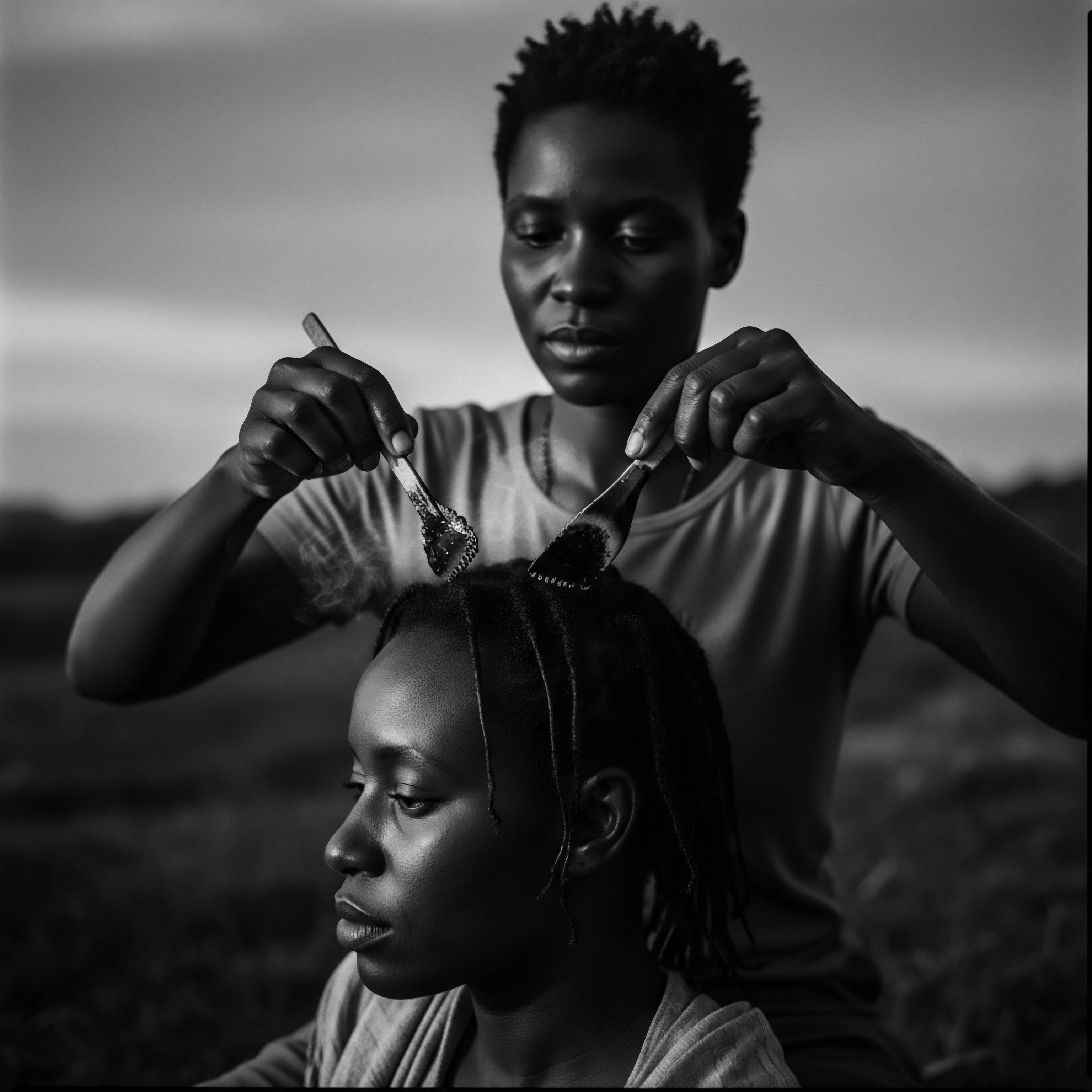
Reflection on the Heritage of Afro Hair Lipids
The journey through the definition and meaning of Afro Hair Lipids reveals more than just scientific components; it uncovers a profound meditation on the enduring spirit of textured hair and its rich heritage. From the elemental biology that shapes each coil and curl to the ancient hands that first pressed shea nuts into protective balm, the story of Afro Hair Lipids is a testament to resilience, ingenuity, and cultural continuity. This exploration invites us to look beyond the superficial, recognizing that the care of textured hair is not merely a modern trend but a living, breathing archive of ancestral wisdom.
The paradox of Afro-textured hair—its high lipid content alongside its propensity for dryness—serves as a poignant reminder that biological truths are often multifaceted, requiring a holistic understanding. The answer lies not in simple deficiencies but in the intricate dance between inherent structure and environmental interaction. Our forebears, without the benefit of microscopes or chemical analyses, instinctively grasped this balance, crafting rituals and remedies that honored the hair’s unique needs.
They understood that the hair was not separate from the self, nor from the community or the spiritual realm. It was, and remains, a crown, a connection, a living legacy.
As we continue to unravel the complexities of Afro Hair Lipids through scientific inquiry, we find ourselves continually returning to the echoes from the source—the communal grooming sessions, the cherished family recipes, the symbolic significance of each strand. These are not just historical footnotes; they are the tender threads that bind us to a profound past and guide us toward a more authentic future. The beauty of textured hair, nurtured by these ancestral lipids, is a powerful statement of identity, a declaration of pride, and a living embodiment of the Soul of a Strand ethos. It is a continuous narrative of adaptation, celebration, and the enduring power of heritage, whispering stories of strength and beauty through every curl, coil, and wave.
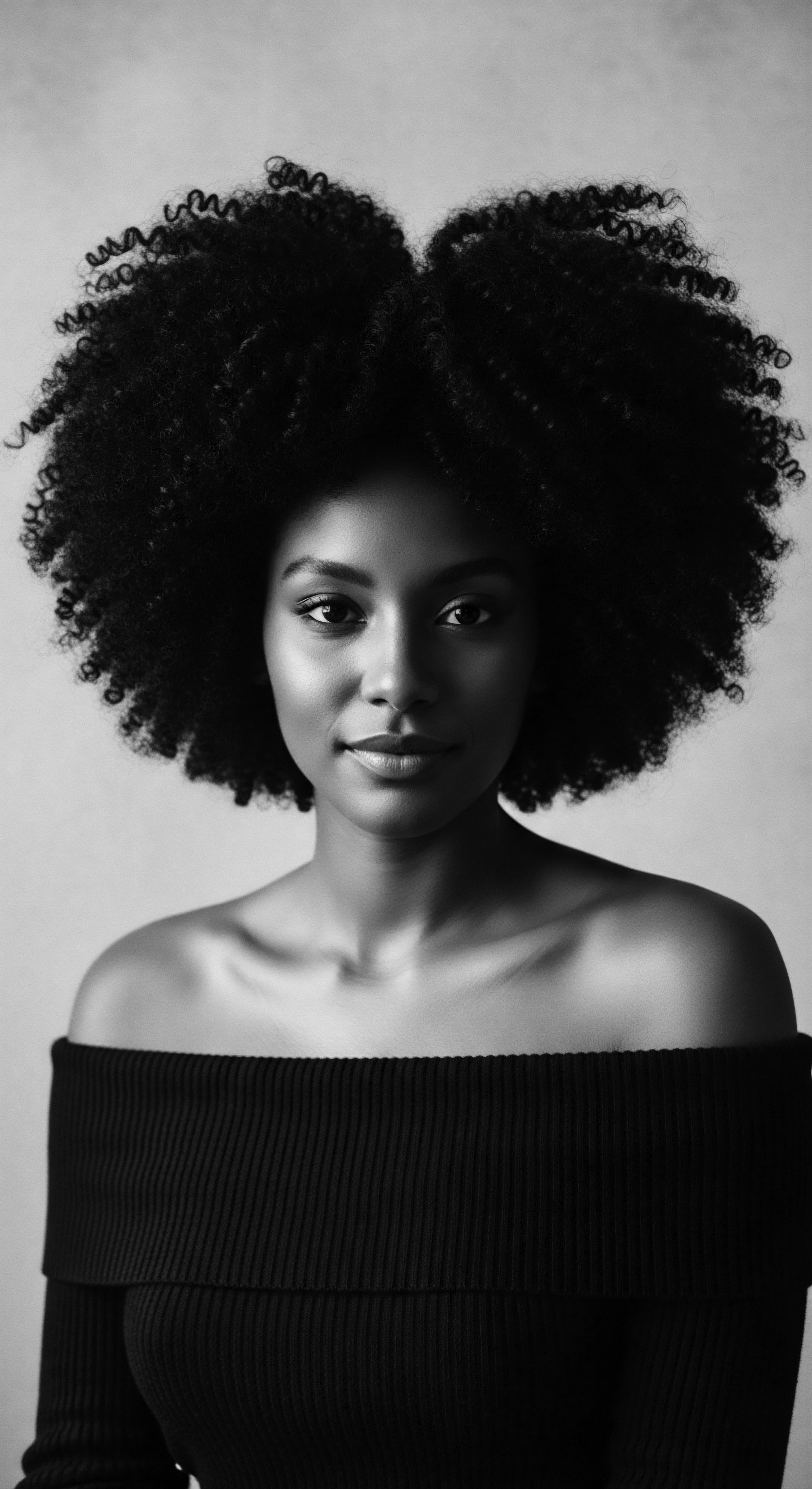
References
- Mbilishaka, O. (2018a). PsychoHairapy ❉ Brushing Up on the History and Psychology of Black Hair. Psi Chi.
- Byrd, A. D. & Tharps, L. D. (2014). Hair Story ❉ Untangling the Roots of Black Hair in America. St. Martin’s Press.
- Robbins, C. R. (2012). Chemical and Physical Behavior of Human Hair. Springer.
- Diop, C. A. (1974). The African Origin of Civilization ❉ Myth or Reality. Lawrence Hill Books.
- Kerharo, J. (1974). La Pharmacopée Sénégalaise Traditionnelle. Vigot Frères.
- Falconi, C. (2009). The Complete Guide to Natural Beauty from the African Continent. Llewellyn Publications.
- Hampton, E. (2000). The Shea Butter Handbook. Hampton Publishing.
- Rosado, T. (2003). The Cultural and Spiritual Significance of Hair in African and African American Communities. Journal of Black Studies, 33(5), 606-621.
- Warner-Lewis, M. (1997). Central Africa in the Atlantic Slave Trade. University of West Indies Press.
- Morrow, B. V. (1990). Hair in African American Culture. Journal of Black Studies, 20(3), 335-346.
- Beckwith, C. & Fisher, A. (1999). African Ceremonies. Harry N. Abrams.
- Sherrow, V. (2006). Encyclopedia of Hair ❉ A Cultural History. Greenwood Press.
